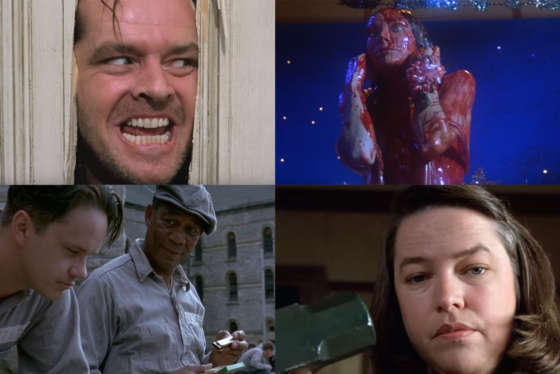WASHINGTON — While it’s a general truth that there are far too many remakes in Hollywood these days, Stephen King’s “It” is the rare exception that was just begging to be updated.
To start, “It” has never been a movie before, debuting as a two-part ABC miniseries in 1990. Moreover, the pre-existing work doesn’t exactly hold up. Yes, the flashes of Tim Curry’s clown scarred us for life with coulrophobia, but the second half is downright laughable with cheesy effects, from Pennywise swirling down a pipe, to kids shooting slingshots at a giant spider.
And so, the 2017 remake is both a welcome revival and a significant upgrade. It’s a total scream as a communal experience in a crowded movie theater, though not without its flaws, starting off far stronger than it finishes with diminishing returns of exponential jump scares.
Based on King’s 1986 novel, the plot follows seven outcast kids in the so-called “Losers Club” in the fictional town of Derry, Maine, in 1989. After the mysterious disappearance of several local children, the misfits band together to battle a child-killing demon who can shape-shift into different forms to project people’s worst fears, most often as Pennywise the Clown.
Co-written by debut screenwriter Chase Palmer alongside Cary Fukunaga (“True Detective”) and Gary Dauberman (“Annabelle”), the script smartly scraps the book’s adulthood framing device. You’ll recall in the TV original, the kids battled the demon in 1960, then reunited 30 years later when it resurfaced. While that worked for a three-hour miniseries, it’s way too much fat for a single movie, thus the end credits tease this as “Part 1” in a rumored duology.
With the adults out of the way, the 2017 remake avoids the convoluted flashbacks and instead focuses on the characters’ linear adolescence. The tone is a cross between “Stand By Me” (1986) — another King adaptation — and Netflix’s “Stranger Things” (2016) with a Spielbergian 1980s setting, running gag of New Kids on the Block and a killer Molly Ringwald reference.
This approach lets the young cast shine, combining fresh faces (Chosen Jacobs, Wyatt Oleff, Jack Dylan Grazer) with established child stars. Leading the way is Jaeden Lieberher (“St. Vincent”), who projects stuttering grief as the responsible Bill, and Finn Wolfhard (“Stranger Things”), who chews up the comic relief as the potty-mouthed smart-a** Richie. The latter’s zingers will initially cause you to laugh, but his constant cursing becomes increasingly forced.
The two most effective performances are the touching turns by Jeremy Ray Taylor, who plays the new kid picked on because of his weight, and Sophia Lillis, who goes out of her way to make him feel welcome despite an abusive father at home. You heard it here first: Lillis will be a real rising star in this business. Together with Taylor, they form the film’s surprising heart.
Of course, most of us will see “It” for the freaky title role of Pennywise. While Curry left giant clown shoes to fill, the role is played with devilish charm by Swedish actor Bill Skarsgård, son of Stellan (“Breaking the Waves”) and brother of Alexander (“Big Little Lies”). His piercing eyes and wild, bucktoothed grin are a nightmarish piece of casting by Rich Delia (“Short Term 12”).
Argentine filmmaker Andy Muschietti shows the directorial chops that put him on the map with his 2008 short and 2013 feature expansion of “Mama.” Peering down creepy sewers and shadowy hallways, Muschietti turns “It” into a textbook of slow disclosure, whether it’s slowly revealing a headless ghoul marching down the stairs or using a voyeuristic camera to stand in for a creepy painting, as a kid notices the portrait is crooked and physically turns the camera.
Still, Muschietti’s most subtly important work comes with production designer Claude Paré (“Rise of the Planet of the Apes”). Together, they put the dreary in Derry, painting a backdrop of small-town decay where teenage bullies grow up to be abusive parents. Here, a penny saved is a penny squandered; that’s the way it crumbles, Pennywise. Upon hearing that the missing-persons rate is six times the national average, we believe it even without the clown.
When you add the clown, it becomes a living hell engulfed by Richard Bellis’ Emmy-winning score reimagined by Benjamin Wallfisch. Collaborating with cinematographer Chung-hoon Chung (“Oldboy”) and editor Jason Ballantine (“Wolf Creek”), Muschietti faithfully recreates the famous opening, as poor Georgie (Jackson Robert Scott) chases a runaway paper boat into a storm drain, where the demon promises, “You’ll float, too.” On the surface, this refers to his victims floating in the sewers; underneath, it matches the motif of floating red balloons.
Unfortunately, the air is gradually let out of the balloon as we enter the second half, which relies too heavily on jump scares, offering shocks every scene while drifting away from the connecting tissue in between. These jolts often rely on CGI, as Pennywise charges toward us, manically shaking like The Jackal in “Thirteen Ghosts” (2001). If genre were politics, the filmmaker throws a ton of red meat to the base, but has no interest in expanding the tent.
Which brings us to a lingering logical question: If the demon specifically takes the form of each person’s deepest fear, why do they all see the clown? Such rules of magic dilute “It,” which would be far creepier if it involved an actual serial killer dressed as a clown (i.e. John Wayne Gacy). It’s a shame Fukunaga relented control to Dauberman’s “Annabelle” shocks, rather than steer it toward slow-burn suspense like “True Detective” (2014) and playing the abductions straight like Fritz Lang’s “M” (1931) or Denis Villeneuve’s “Prisoners” (2013).
In the end, it all runs a little long. Horror flicks should ideally run 90-100 minutes, but “It” drags at 135 minutes (you’ll bloat, too). This wouldn’t matter if new elements were continually introduced, but you’ll check your watch after a seemingly-climatic showdown in the villain’s lair, only to double back to the same location for a nearly identical battle 20 minutes later.
For all this, many critics’ hype is hyperbolic. The fact that “It” has a higher Rotten Tomatoes rating (89 percent) than “Wind River” (86 percent), “Detroit” (82 percent) and “Crown Heights” (73 percent) is almost as outrageous as the fact that its “top critics” rating is somehow higher than King’s three best horror flicks: “Carrie” (1976), “The Shining” (1980) and “Misery” (1990).
How can this be? Is “It” really that good? To quote Bryce Harper, that’s a clown question, bro.
At least the film succeeds in the two metrics that matter: (A) Author, who appears in a pre-film teaser calling it a worthy take on his most personal work; and (B) Audience, which will have a blast clinging to each other at the theater. So while “It” might not devour the top of the horror food chain, it’s a modest mouse that makes us squirm. Alright, already, we’ll all float on.










